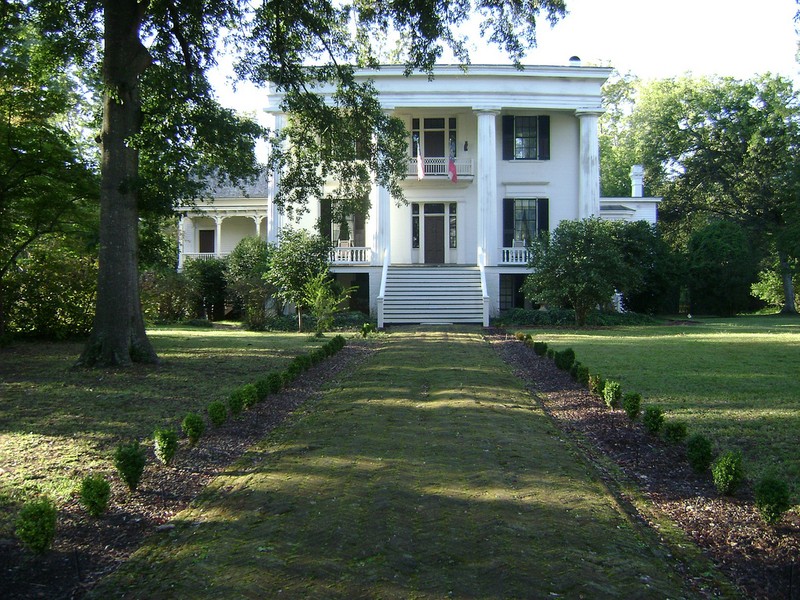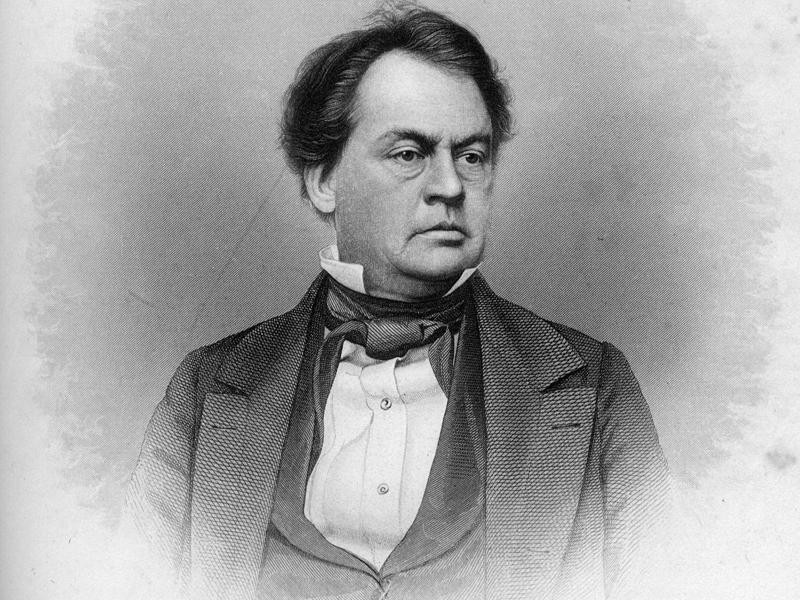Robert Toombs House
Introduction
Text-to-speech Audio
Images
Robert Toombs House

Robert Toombs

Backstory and Context
Text-to-speech Audio
Toombs was born on 2 July 1810 close to Washington. At 14 he attended Franklin College, now the University of Georgia, but was kicked out because he ignored the rules. Following this he attended school in New York at Union College and the University of Virginia Law School in Charlottesville, Virginia. He started his law business at the age of 18 and became a member of the Georgia House of Representatives when he was 28. He became a representative in the U.S. House of Representatives in 1844, and was originally part of the Whig Party but eventually joined the Democrats. Toombs was a spokesperson for Georgia in the United States Senate from 1853 to 1861. Originally, Toombs was a Unionist who was against the Southern States seceding, however by the end of the 1850s he changed his mind and supported secession.
In the 1860 election, Toombs wanted candidate John C. Breckinridge to win the presidency. To his disappointment Abraham Lincoln won the election, and not long after Toombs sent a telegraph to Georgia pushing for the state’s secession from the Union. He left the Senate and gave his final speech as a member on 2 January 1861. In the speech he spoke against the freeing of the slaves and cautioned the North that if they attacked the South, it would fight back. When he came back to Georgia, Toombs became a strong supporter for immediate secession. The state chose to secede from the Union 208-89 on 19 January 1861. Toombs actually wanted to be the president of the Confederate States of America but his wish did not come true when Jefferson Davis was chosen.
Toombs was against the Confederacy attacking Fort Sumter in Charleston, South Carolina, believing the attack would ultimately lead to the South’s harm more than lead to something good. Once the war started, Toombs resigned from the cabinet and received the title of a brigadier general on 19 July 1861. He was involved in the Peninsula, Northern Virginia, and Maryland Campaigns as part of General Robert E. Lee’s Army of Northern Virginia. Toombs fought at Antietam and was in charge of protecting the Burnside Bridge against Union General Ambrose Burnside’s soldiers. Toombs men had a skirmish against several of these men as they attempted to pass over the bridge. Toombs was injured sometime during the battle at Antietam but stayed there until the battle was over. In 1863 he resigned his position and came back to Georgia where he spoke against the policies of Davis. He became a brigadier general in General Gustavus W. Smith’s unit of the Georgia Militia, where he was involved in the Battle of Columbus, Georgia. After the South’s defeat, Toombs fled to Havana, Cuba and then to Paris, France. In 1867 he returned to his home in Georgia where he continued to be a supporter of states’ rights until his death. He was never again allowed to vote, and being against Reconstruction, he heavily supported Georgia’s Constitutional Convention in 1876.
On 15 December 1885 Toombs passed away and was laid to rest at Resthaven Cemetery in Washington, Georgia. His wife was buried in the same location, and a monument marks their graves. The house still stands at the Robert Toombs House Historic Site in Washington, Georgia. It is controlled by Wilkes County.1
